1.1 Artificial intelligence, machine learning and deep learning
Deep Learning with Python
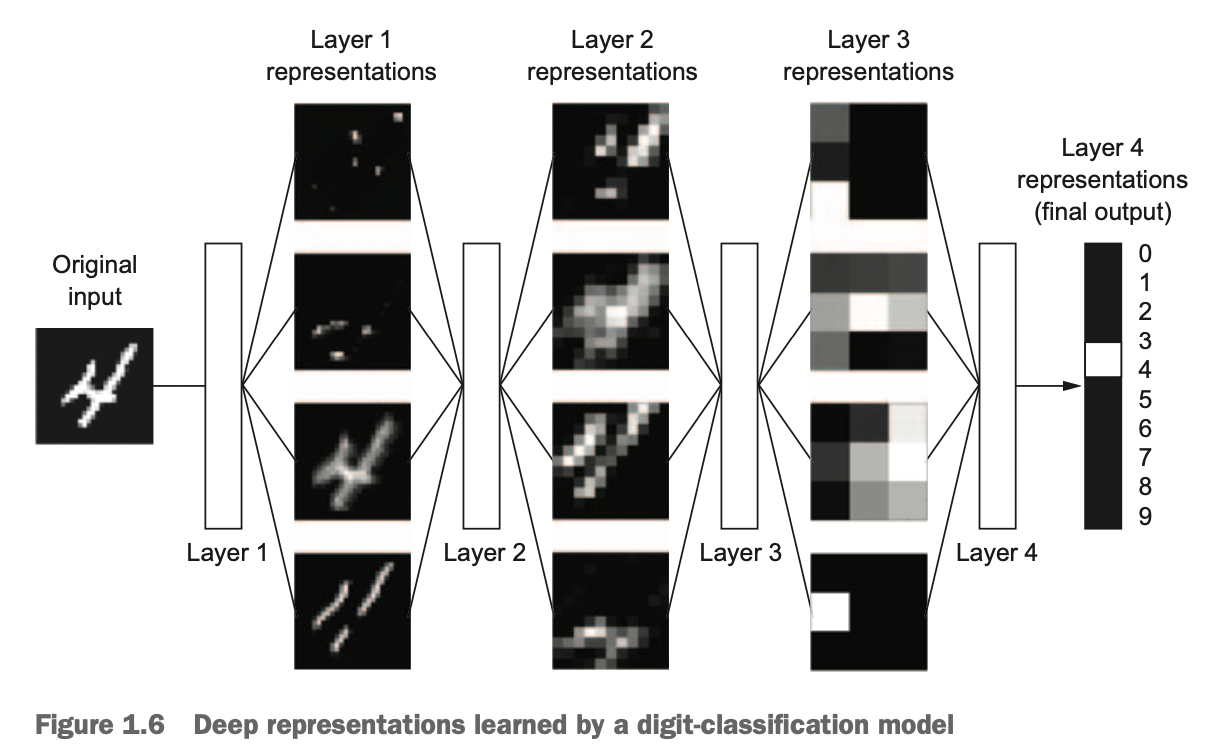
Chap 1 What is deep learning?
High level definitions of fundamental concepts
Timeline of the development of machine learning
Key factors behind deep learning's rising popularity and future potential
1.1.1 AI
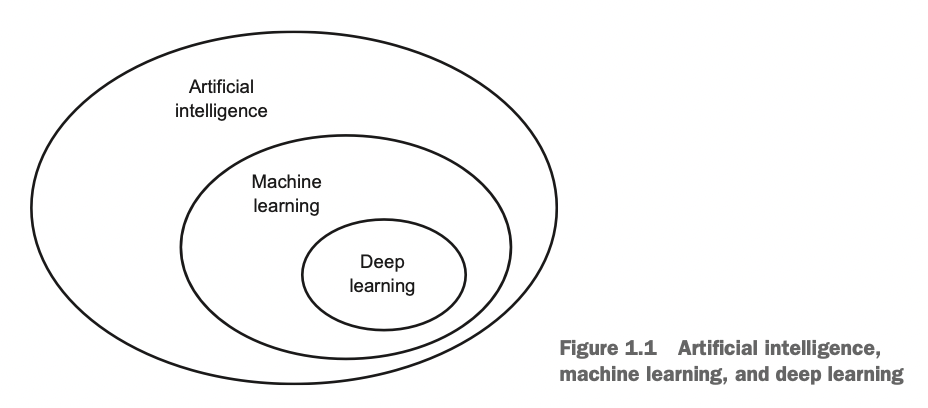
A concise definition of the field would be as follows: the effort to automate intellectual tasks normally performed by humans.
For a fairly long time, many experts believed that human-level artificial intelligence could be achieved by having programmers handcraft a sufficiently large set of explicit rules for manipulating knowledge. This approach is known as symbolic AI.
Although symbolic AI proved suitable to solve well-defined, logical problems, it turned out to be intractable to figure out explicit rules for solving more complex, fuzzy problems, such as image classification, speech recognition, and language translation. A new approach arose to take symbolic AI’s place: machine learning.
1.1.2 ML
AI pioneer Alan Turing - “Computing Machinery and Intelligence(1950),” which introduced the Turing test as well as key concepts that would come to shape AI.
With machine learning, humans input data as well as the answers expected from the data, and out come the rules. These rules can then be applied to new data to produce original answers.
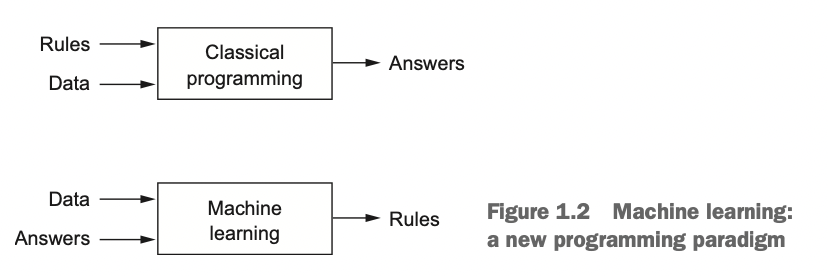
A machine-learning system is trained rather than explicitly programmed. It’s presented with many examples relevant to a task, and it finds statistical structure in these examples that eventually allows the system to come up with rules for automating the task.
1.1.3 Learning representation from data
Input data points
For instance, if the task is speech recognition, these data points could be sound files of people speaking. If the task is image tagging, they could be pictures.
Examples of the expected output
In a speech-recognition task, these could be human-generated transcripts of sound files. In an image task, expected outputs could be tags such as “dog,” “cat,” and so on.
A way to measure whether the algorithm is doing a good job
This is necessary in order to determine the distance between the algorithm’s current output and its expected output. The measurement is used as a feedback signal to adjust the way the algorithm works. This adjustment step is what we call learning.
The central problem in machine learning and deep learning is to meaningfully transform data: in other words, to learn useful representations of the input data at hand—representations that get us closer to the expected output.
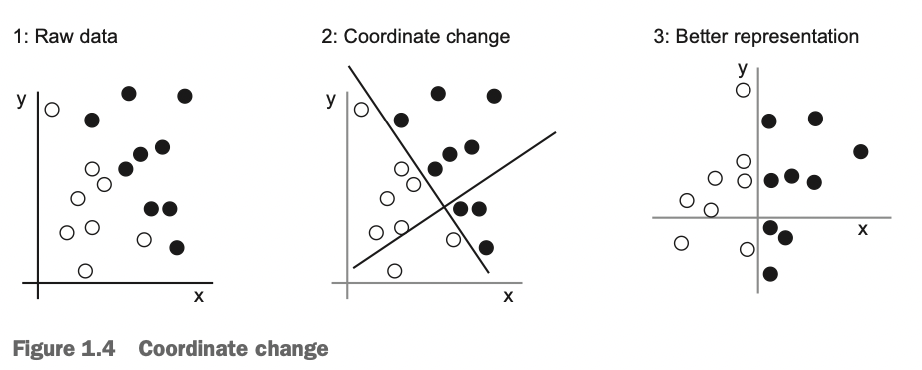
What machine learning is, technically: searching for useful representations of some input data, within a predefined space of possibilities, using guidance from a feedback signal.
1.1.4 The "deep" in deep learning
How many layers contribute to a model of the data is called the depth of the model. Other appropriate names for the field could have been layered representations learning and hierarchical representations learning.
In deep learning, these layered representations are (almost always) learned via models called neural networks, structured in literal layers stacked on top of each other.

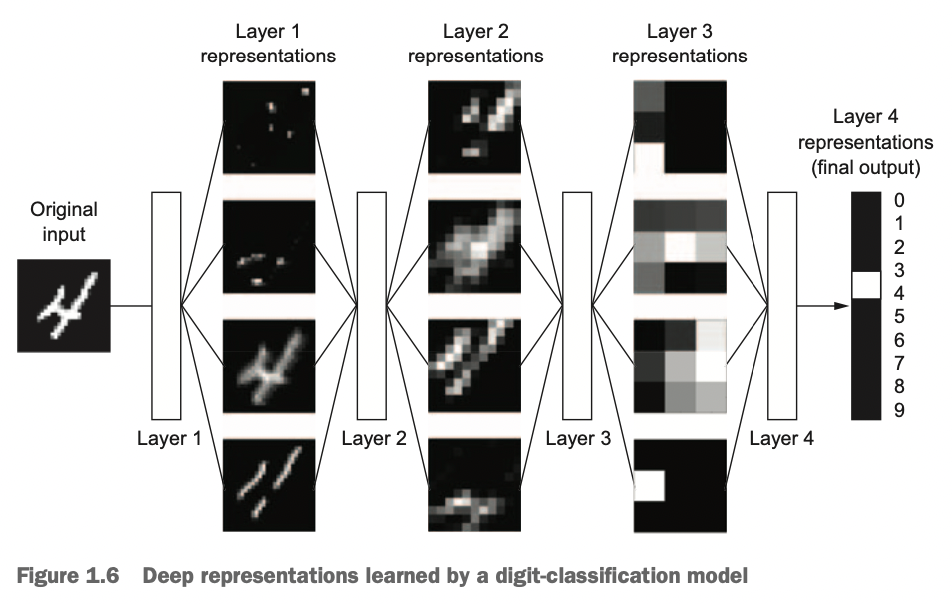
1.1.5 Understanding how deep learning works, in 3 figures
The specification of what a layer does to its input data is stored in the layer’s weights, which in essence are a bunch of numbers.
In technical terms, we’d say that the transformation implemented by a layer is parameterized by its weights(or parameters of a layer).
Learning! means finding a set of values for the weights of all layers in a network, such that the network will correctly map example inputs to their associated targets.
To control the output of a neural network, you need to be able to measure how far this output is from what you expected. This is the job of the loss function of the network, also called the objective function. The loss function takes the predictions of the network and the true target and computes a distance score, capturing how well the network has done on this specific example.
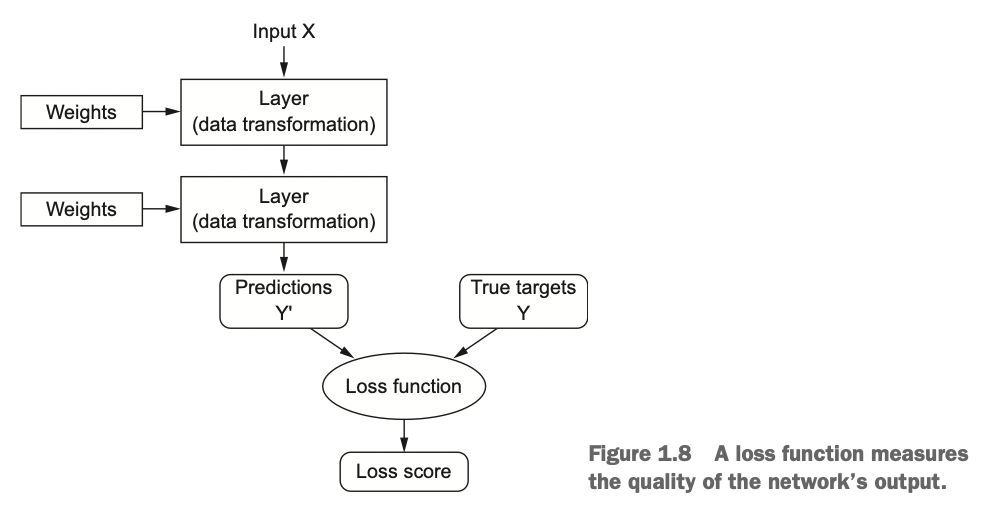
The fundamental trick in deep learning is to use this score as a feedback signal to adjust the value of the weights a little, in a direction that will lower the loss score for the current example. This adjustment is the job of the optimizer, which implements what’s called the Backpropagation algorithm.
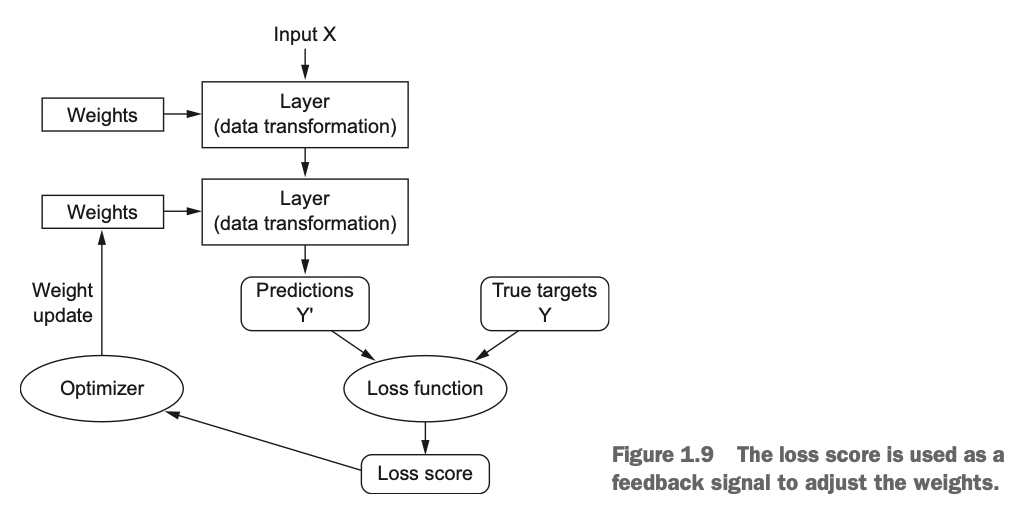
With every example the network processes, the weights are adjusted a little in the correct direction, and the loss score decreases. This is the training loop, which, repeated a suffi- cient number of times, yields weight values that minimize the loss function.
1.1.6 What deep learning has acheived so far
- Near-human-level image classification
- Near-human-level speech recognition
- Near-human-level handwriting transcription
- Improved machine translation
- Improved text-to-speech conversion
- Digital assistants such as Google Now and Amazon Alexa
- Near-human-level autonomous driving
- Improved ad targeting, as used by Google, Baidu, and Bing
- Improved search results on the web
- Ability to answer natural-language questions
- Superhuman Go playing
4개의 댓글
Artificial Intelligence (AI), machine learning, and deep learning are dynamic fields revolutionizing technology. AI simulates human intelligence, machine learning enables systems to learn from data, while deep learning involves neural networks emulating the human brain. Explore more at https://www.soonkpackagingmachine.com/. These technologies are reshaping industries, from healthcare to finance. Companies like Soonk Packaging Machine leverage AI for innovation, enhancing efficiency in packaging processes. As these advancements continue, the intersection of AI, machine learning, and deep learning promises groundbreaking solutions for a myriad of challenges across diverse sectors.
Artificial intelligence is transforming industries by enabling smarter decisions, while machine learning refines systems with data-driven insights, and deep learning brings advanced pattern recognition. Businesses seeking to implement these innovations can benefit from AI agent development Services that create intelligent, automated solutions to streamline workflows, reduce costs, and improve user experiences. This helps companies stay competitive and future-ready.
AI Human technology is reshaping how people engage with digital systems by bringing realistic interaction into virtual environments. These creations use advanced modeling, voice synthesis, and behavioral algorithms to simulate natural communication. The mid-stage development of AI Digital Human platforms demonstrates how lifelike avatars can be applied in customer support, education, and entertainment. Their adaptability allows for seamless conversations that feel closer to real human dialogue. As these systems evolve, they highlight how artificial intelligence can bridge efficiency with personal connection in modern digital experiences.




I think it's especially important now to use AI in the process of doing business in the form of various apps, software and so on. In my opinion, it's worth finding a really good software development company whose specialists can find and offer the best AI solution for a particular client in order to fulfill his business tasks and needs.